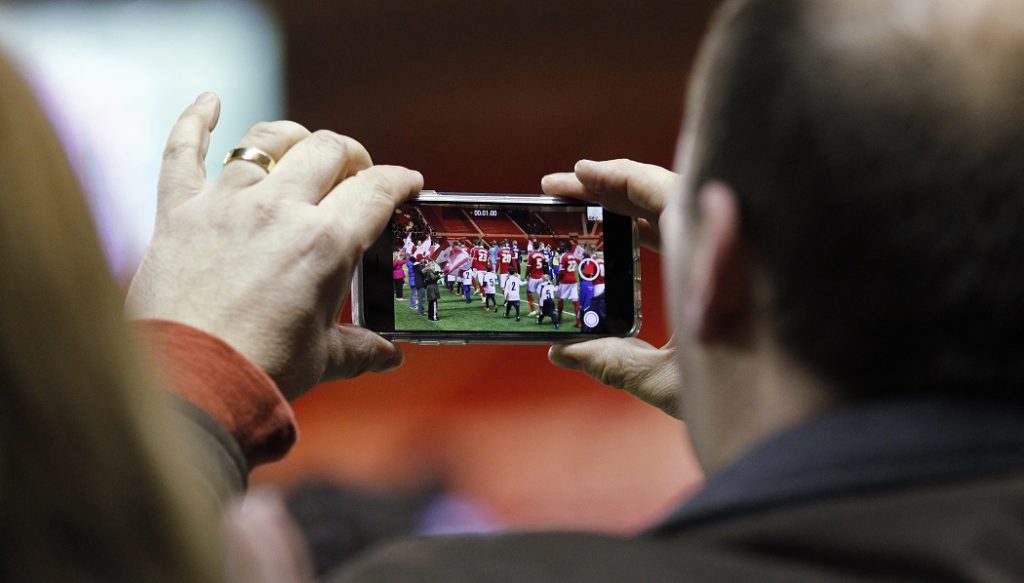2018 Trends in Sports Tech: Wearables, fan engagement and story telling
January 29, 2018
The sports industry is an interesting space and one often misunderstood by those who sit outside it. For example, everyone thinks sports executives operate in a world awash with cash (if only) when, in truth, its real currency isn’t financial, it’s a mix of passion, brilliance, hope and fan loyalty. The tech that taps into these are the ones most likely to succeed.
Another conception about sports, with which I take issue, is that it is quite a static space. Certainly, there is a tangible ‘blazer brigade’ in some quarters, who block innovation for unfathomable reasons but, if the Sports Technology Awards’ entries are anything to go by, it is a sector which is both highly innovative and dynamic.
One of the joys of being involved with the Awards – and its latest venture – The STA Start Ups, is that entries reveal what trends to look forward to (and what over-hyped tech is unlikely to be bothering the masses any time soon). With this in mind, here are the Sports Technology Awards team’s predictions for 2018
Wearables
When we launched the Awards, wearables were the hot topic with the category leading the volume of entries by a very big margin. Whilst the value of this market has tripled over the past four years, to an estimated US$5.8bn, this growth has been in the non-elite portion of the market.
With a few exceptions, popular wearables measure steps, sleep and hydration, which has value for the mass-market, especially with the rising degree to which wearables have integrated into kit. However, elite players are now concerned with insights, such as DNA-led metrics. When wearables catch up with this, expect some exciting disruption in the space.
Performance Analytics
The propensity and the range of analytics recently launching is staggering and is set to continue. However, the space is getting crowded rapidly, with a consequence that it is also getting increasingly niche; as with wearables, we expect the market will rationalise quickly.
An additional consideration in this space is the role of broadcast, with a lot of companies creating software expecting to leverage the broadcast market however, the data ownership coming increasingly to the fore (i.e. who owns athletes’ stats and how public should these be made) how feasible this revenue stream is remains to be tested.
Athlete Welfare
Governing bodies are increasingly under moral and financial pressure regarding athlete welfare, so the market to provide solutions opens up. The way sport is managed makes technology the perfect way ‘go to’ since it sits neatly with governance protocols – i.e. solutions can be standardized, tracked, measured and universally imposed.
The clearest gap for technology to help is with head injury, both as an immediate way of dealing with an in-competition incident but as future-proofing athletes from the range of issues increasingly associated with head trauma. Whilst this is the most pressing welfare consideration, it isn’t the only one; NGBs need to be seen proactively taking preventative steps on matters such as child safety, doping and mental health soon.
Fan Engagement
‘Putting fans front and centre of the sports experience’ is a well-worn phrase but it’s something brands remain committed to. The challenge is that as fans become ever-more sophisticated, engagement solutions need to match this. This is where AR and business analytics will continue to have an impact and, whilst there are some interesting activations using VR, it is highly unlikely to see widespread adoption any time soon.
Video and Story Telling
From the NBA’s Rapid Replay to the ability for all broadcasters to snip and upload action socially in seconds, video has lost none of its power.
Over the past few years, the trend was to try and get ever-shorter but, more recently, people are waking up to the fact that sports fans (even Millennials) are engaged by a story, regardless of duration. In other words, tell a tale well and the audience will stay with you. The tech that enables this will continue to flourish.
These are what we believe to be the things that will be significant in 2018. Sports innovation may be a speedboat, but the sector tends to be more of a super tanker so whilst topics like cryptocurrency, Blockchain and AI will doubtless be the subjects of editorial regularly, as things stand, we can’t see them impacting the sector meaningfully in the next 12 months.
About the contributor
Rebecca Hopkins is the CEO of the Sports Technology Awards Group



